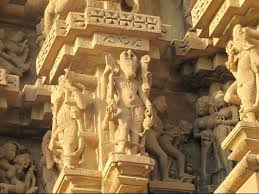Khajuraho Travel
Khajuraho of the Indian state of Madhya Pradesh is world renowned for Temples, impressive architecture, and erotic or esoteric sculptures. Of a total of 85 beautiful temples built between the 9th and 12th centuries by the Chandela Rajputs, only 20 still survive in good conditions, the remaining have given way to the ravages of time and the nature.
Khajuraho travel forum is well-established to support your travel to Khajuraho and facilitate you greatly in exploring the renowned temples, which have been attracting and entertaining myriads of tourists and travelers from every part of India and the world. Today, a large number of tourists visit Khajuraho on the occasion of the Khajuraho Dance Festival held every year from 25th February to 2nd March from India and abroad.

















